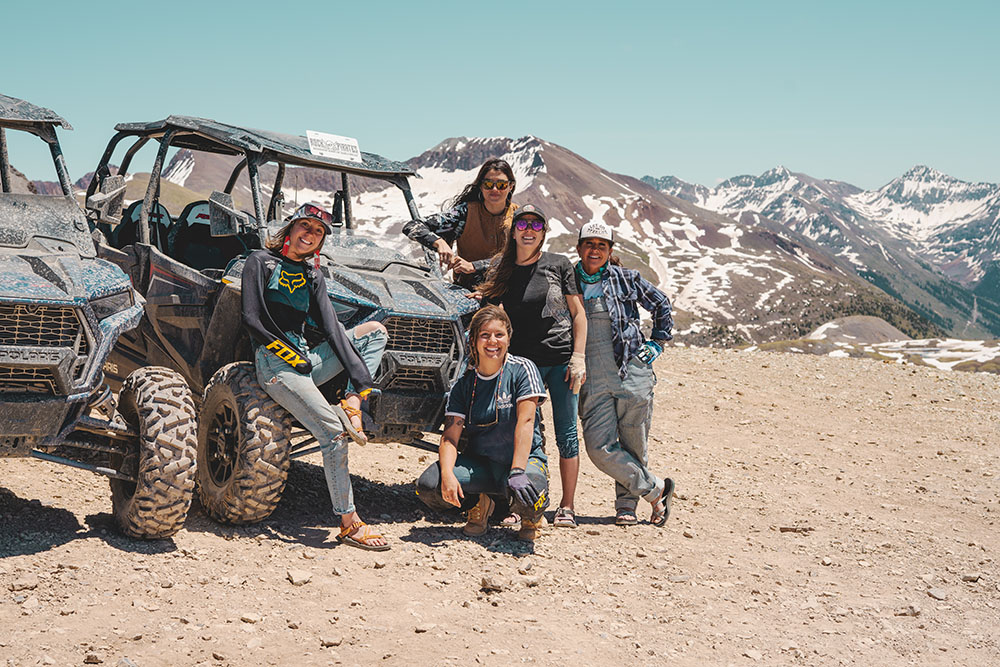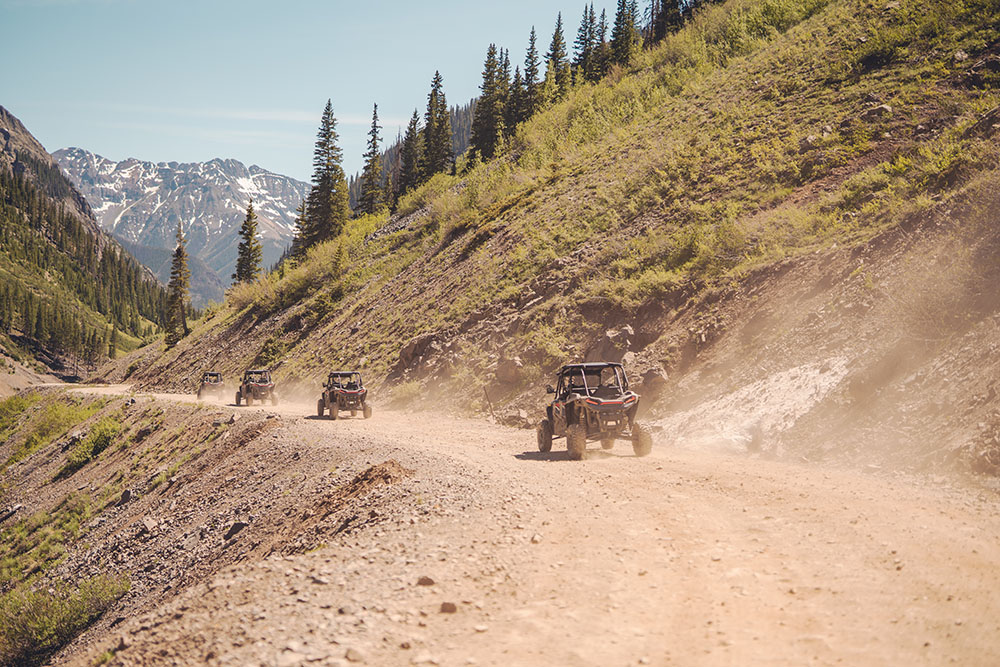Choosing the right All-Terrain Vehicle (ATV) is about much more than color or brand preference—it’s about finding the right fit that ensures both the safety and enjoyment of the rider.
The size of the ATV is a crucial factor that can significantly impact a rider’s ability to control the vehicle effectively, especially in challenging terrains or during long hours of riding.
This complete guide to ATV sizing aims to walk you through the essential aspects of getting outfitted to your four-wheeler, helping you understand why the right size is not just a recommendation, but a necessity for any enthusiast looking to make the most out of their off-road adventures.
Understanding ATV Sizes
ATVs come in a variety of sizes designed to cater to different age groups, experience levels, and usage intentions.
The size of an ATV is typically measured by the engine displacement in cubic centimeters (cc), which gives a good indication of the power the engine can deliver.
Generally, the larger the engine, the larger the overall size of the ATV, affecting both the physical dimensions and the weight of the vehicle.
Categories Based on Use:
- Recreational ATVs: Often smaller and more maneuverable, these are designed for general riding and lighter tasks.
- Racing ATVs: Built for speed and performance, these have powerful engines and are geared towards experienced riders.
- Utility ATVs: Larger and more robust, designed for towing, hauling, and extensive off-road use.
Understanding the purpose behind different ATV sizes can help in making an informed decision that aligns with your intended use, ensuring that the vehicle serves both your needs and your capabilities.

Factors to Consider When Choosing ATV Size
Selecting the correct ATV size involves more than just picking out a vehicle.
Balancing power and control is important for riders of all ages and matching rider to machine might be more than meets the eye.
Here are key factors every prospective ATV owner should consider:
Rider’s Age and Experience:
- Young Riders or Inexperienced Riders: Smaller, less powerful ATVs are recommended to ensure that the rider can handle the vehicle safely. For children and teenagers, ATVs with engine sizes ranging from 50cc to 125cc are advisable.
- Adults and Experienced Riders: Adults can handle larger ATVs with more power, typically starting from 250cc and above, depending on their comfort and experience level. Adult riders’ balancing power can come into play with experienced riders being able to handle larger machines.
Relationship Between ATV Dimensions and Rider Height and Weight:
- Height: The rider should be able to sit on the ATV and comfortably reach the ground with both feet. This is crucial for maintaining balance and control when stationary.
- Weight: Heavier riders might require ATVs with more powerful engines and sturdier builds to efficiently handle the additional load, especially in utility settings.
Intended Use:
- Trail Riding: For trail riding, consider ATVs that offer a good balance between power and maneuverability to navigate various terrains comfortably.
- Racing: Racing ATVs should have higher power outputs and lighter frames for optimal speed and agility.
- Work-Related Tasks: For tasks that involve hauling or towing, opt for utility ATVs with larger engines and enhanced durability.
Understanding these factors ensures that the ATV not only fits physically but also aligns with the rider’s needs and expectations, making every ride safer and more enjoyable.
Importance of Ground Clearance and Seat Height
Ground clearance and seat height are critical dimensions that significantly influence an ATV’s performance and the rider’s control.
Ground clearance determines how well an ATV can navigate over obstacles and rough terrain without underbody damage.
Higher clearance is essential for rugged outdoor environments to prevent snagging on rocks, roots, and debris.
Seat height, on the other hand, affects how well a rider can control the ATV.
It should be tall enough to give the rider a clear view of the terrain but low enough to allow easy mounting and dismounting, as well as stable grounding of the feet when stopped.
Together, these measurements ensure a balance between comfortable riding posture and effective maneuverability, crucial for safe and enjoyable ATV experiences.
Key ATV Size Categories
Different ATV size categories are designed to meet the specific needs of various users—from young beginners to seasoned adult riders. Here’s a look at the primary categories:
Youth ATVs:
- Typically range from 50cc to 125cc.
- Designed with safety features like adjustable speed limiters and more robust controls.
- Suitable for children and young teens, helping them learn and grow comfortable with riding basics under supervision.
Entry-Level Adult ATVs:
- Engine sizes usually start around 250cc to 400cc.
- These ATVs offer a balanced combination of power and manageability, making them ideal for adult beginners or riders who prefer light to moderate trail riding.
Full-Size ATVs:
- Engine sizes can range from 500cc to 1000cc and above.
- Built for more demanding tasks such as heavy trail riding, racing, or extensive utility work.
- These models offer advanced features like increased towing capacity and enhanced suspension systems, tailored for experienced riders who need high performance and durability.

How to Test Fit an ATV
Finding the right ATV is like choosing a pair of shoes—it should fit well to ensure comfort and functionality. Here’s how to test fit an ATV:
- Sitting Position: Sit on the ATV and check if your feet touch the ground while your buttocks are firmly on the seat. You should be able to plant both feet flat on the ground without strain.
- Reach: Make sure you can easily reach and operate the handlebars and all controls without overextending. Handlebars should allow for a slight bend in your elbows when holding them.
- Control Access: Test all controls (throttle, brakes, clutch, etc.) to ensure you can operate them comfortably and effortlessly. This is crucial for maintaining control while riding.
Additional Considerations
While sizing is critical, there are additional considerations that can influence the choice of an ATV:
Safety Features:
- Look for ATVs that offer enhanced safety features like automatic transmission, which can be easier for beginners to handle, and features like emergency shut-off switches.
Budget and Brand Preferences:
- Determine your budget as ATVs can vary significantly in price, influenced by brand, size, and features.
- Brand preference might play a role due to past positive experiences, specific technologies, or customer service reputation.
Conclusion
Choosing the right size ATV is crucial for safety, comfort, and enjoyment.
By considering factors such as the rider’s age, experience, height, weight, and intended use, you can narrow down the best options.
Always test fit ATVs before purchasing to ensure they meet your physical requirements and comfort levels.
Remember, the right ATV should feel like an extension of yourself; it should enhance your riding experience by providing the right balance of power, control, and comfort.
By following the guidelines laid out in this article, you are more likely to make an informed decision that ensures you enjoy every ride to the fullest, safely and comfortably.
Whether for work, sport, or leisure, finding the perfect ATV size will enhance your ability to handle any adventure that comes your way.

